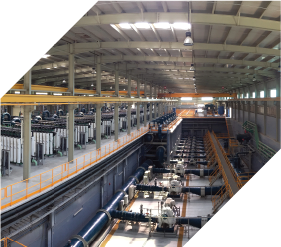ZLD, short for zero-liquid discharge, is a water treatment process to purify and recycle wastewater. This process is an advanced wastewater treatment method that includes ultrafiltration, reverse osmosis, evaporation/crystallization, and fractional electrode-ionization. We call this process a zero-liquid discharge because it leaves zero discharge at the end of the treatment cycle.

This water treatment is an engineering approach to reducing contaminants from water and making it reusable. Many water treatment processes strive to maximize freshwater recovery and waste on the market, but ZLD is in the late hype. It is considered the most demanding target as it is a budget-friendly process and features challenging outcomes. But its cost is directly proportional to the concentration of the contaminants. Moreover, salinity, scaling compounds, and organics advance concentration, which adds costs to managing these increases. You can achieve zero liquid discharge by combining water treatment technology that can treat wastewater from concentrated contaminants.
ZLD System Design
Evaporation systems cost more, sometimes even more than the membrane systems. They are more capital and operating-cost intensive, with crystallizers being the most expensive components. Look into membrane evaporators to reduce business costs and make your life easier. They might be your better option!
If wastewater consists mainly of water, membranes can dramatically decrease the process size needed for subsequent plant operations like evaporation. It can help reduce the capital, and operating costs and how much energy is required to operate an industrial plant. To attain highly reusable water in a wastewater filtration system, You would require appropriate pretreatment, softening, and pH adjustment.
Regarding this filtration process design, companies use vertical tube falling film brine concentrators to concentrate lower total dissolved solids (TDS) brine solutions up to 12% to as high as 25% total solids. It also helps minimize the design capacity of a downstream forced circulation crystallizer. Brine concentrators efficiently manage the scaling of sparingly soluble divalent salts such as calcium carbonate, calcium sulfate, and silica.
Talking about the ZLD system design, companies use forced circulation crystallizers to concentrate brine blowdown from upstream concentration equipment. Although you can treat small wastewater flows directly with a forced circulation crystallizer. Companies design crystallizers keeping certain factors under priority, such as handling the crystallization of salts with deionized water. They can be quite complex and use a lot of power, which can be unfortunate for smaller systems.
Used salts could be sparingly or highly soluble sodium salts, such as sodium chloride and sodium sulfate, without excessive scaling and cleaning frequencies.
Wrapping up
We’ve employed state-of-the-art Zero Liquid Discharge(ZLD) technology to help us recover as much water as possible. This plant has more than a 99% recovery rate, so there’s no risk of water wastage. When industries like mining and petrochemicals generate large amounts of wastewater, they get a lot of exposure to the environment. The best solution is liquid zero flush technology which is environmentally friendly, and we can use raw water with sewage.
To learn more about zero liquid discharge and processes relevant to it take a peek at Aquatech website.


